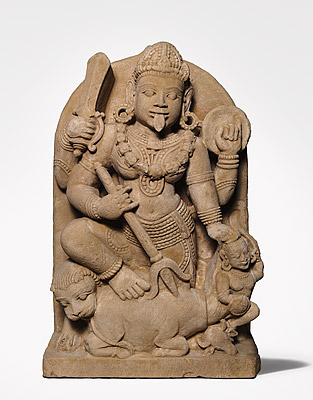Michaela Boland, Illegal antiquities trade grows as NGA door guardians remain on display, The Australian, 13 June 2015

Kumar, who was born in Tamil Nadu’s capital Chennai but who lives in Singapore, has become a key protagonist in the unfolding scandal around the international looted antiquities trade that has embroiled institutions across the world, including some in this country.
He became intrigued by the 900-year-old Dancing Shiva the National Gallery of Australia was forced to return to India last year when it was revealed to have been stolen from a temple in Tamil Nadu. The idol was sold to the gallery by New York art dealer Subhash Kapoor. Since that time, Kumar, from his humble home office, has helped uncover information about numerous other dubious items in collections around the world.
Quietly spoken and methodical, Kumar is married with a son. But he admits that, beyond his family and busy day job, he is wedded to antiquities sleuthing.
Review has been in almost daily contact with Kumar for more than two years. At all hours he will fire off questions about artefacts he has discovered while trawling through the online databases of our public galleries. “Can you get a picture of the back of that statue for me? Can you find out who owned this? I’m not a journalist but I rang that workshop in Delhi and the owner there said he’d never sold antiquities of any kind …”
Fluent in Tamil and English, with a web of contacts on the ground in India and, increasingly, internationally, Kumar has become a link between India and the English-speaking West, able to straddle the two cultures — one where he believes the theft of ancient antiquities continues apace, and the English-speaking West where, despite so much publicity, clients continue to seek out ancient treasures.
An initial interest in Indian history and art has since morphed into a voracious appetite for information, propelling him on a journey to rediscover his Hindu heritage along the way.
Kumar started a blog, Poetry in Stone, but failed to have the impact in India he sought. But that impact came once he started working with this newspaper and US antiquities blogger Jason Felch of Chasing Aphrodite. Kumar has since stopped writing his blog and has taken up directly lobbying ministers in the Indian government. He gives public talks about his discoveries, writes opinion pieces for Indian newspapers and has been working directly with American and Indian investigators. “I spend all my free time on this,” he says.
Read more (may involve paywall).
| At the recent (and also excellent) MAAS Research Symposium on Provenance, Dr Gerard Vaughan, the current Director of the National Gallery of Australia, described the NGA’s Asian Art Provenance project. Over time the project will assess and publish the collecting histories of all works of art in the NGA’s Asian collection (approximately 5,000 objects). Dr Vaughan anticipates that this painstaking work, combined with closer liaison with India and other Governments in the region, will be a more proactive way forward. |

